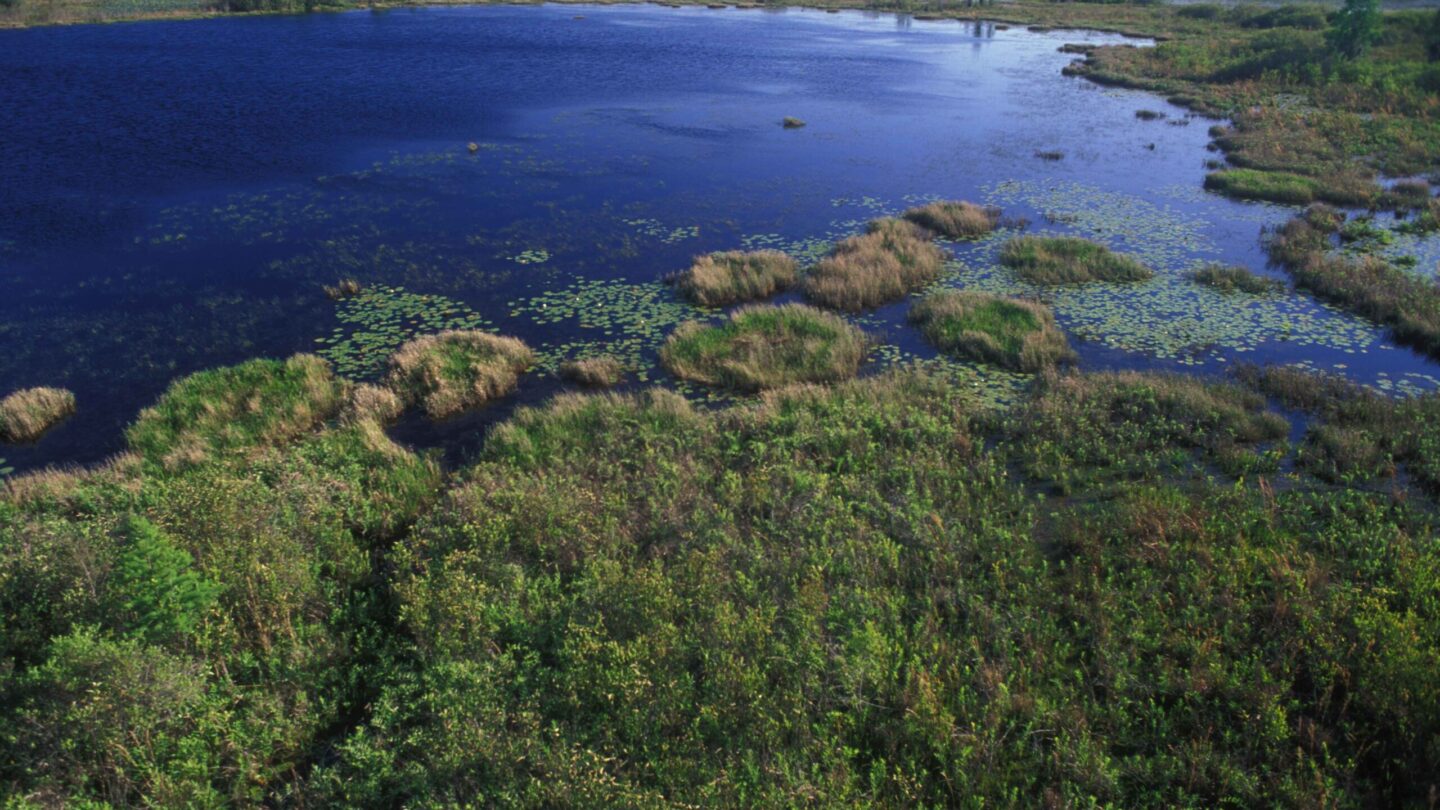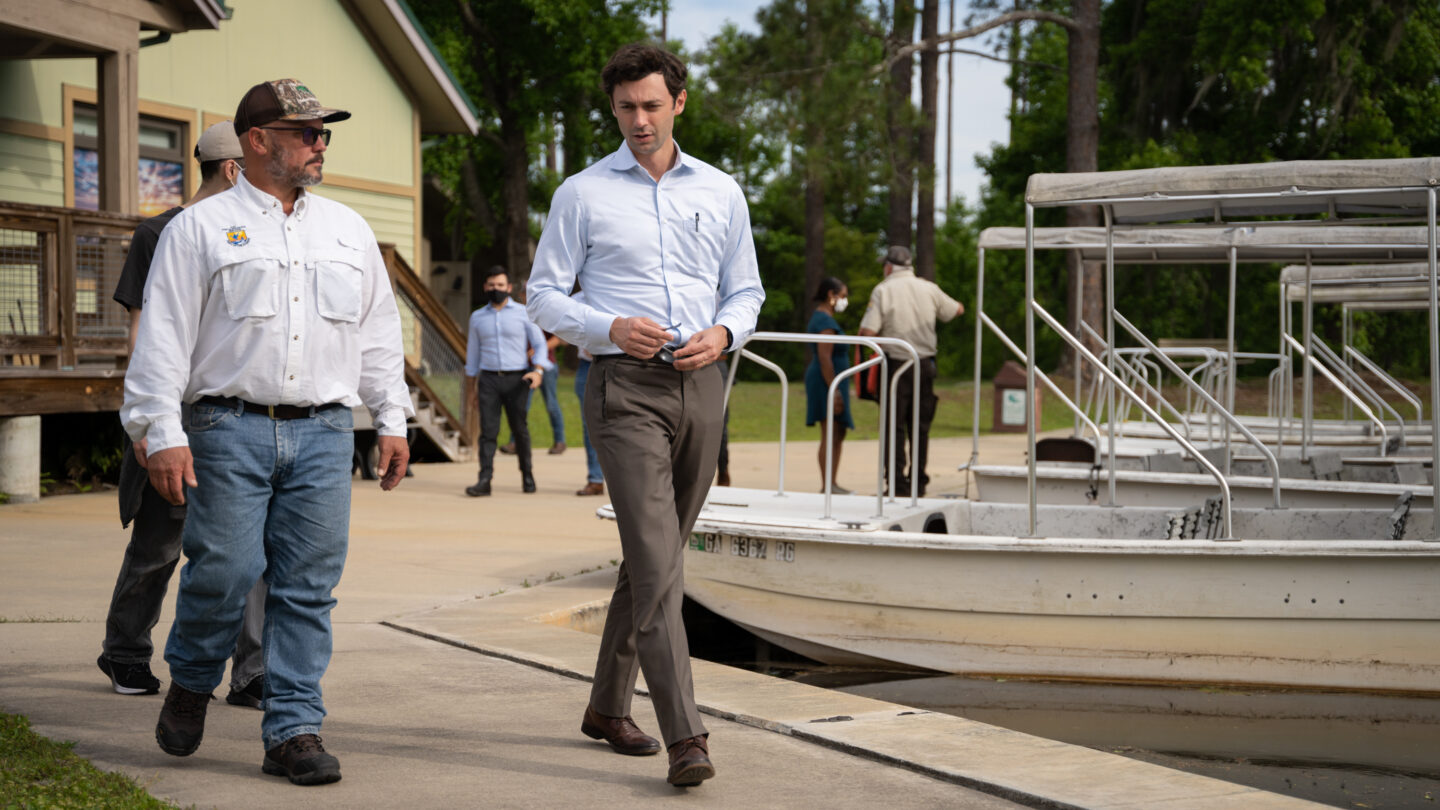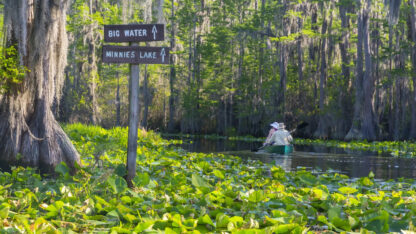Federal government reverses decision on mine near the Okefenokee

Wikimedia Commons
A proposed mine near the Okefenokee Swamp has been dealt a major setback.
The U.S. Army Corps of Engineers is reversing an earlier decision that it and other federal agencies didn’t have oversight over the mine’s environmental impact.
That makes the path ahead for the controversial titanium mine, owned by Twin Pines Minerals, likely longer, more complicated and more expensive because it will have to go through a federal review process.
The proposed project near the Okefenokee National Wildlife Refuge has gotten support from local officials interested in the potential to bring jobs to the rural area.
But scientists and environmentalists have been fighting the mine for years, with concerns about how it would affect the Okefenokee Swamp — itself an economic driver in the area — as well as nearby rivers.
In a memorandum on Friday, the Corps said it was reversing the earlier decision that took it and other federal agencies out of the picture because it had failed at the time to consult with the Muscogee (Creek) Nation. The earlier decision was made during the Trump administration.
“I am pleased to announce the restoration of protection for this wildlife refuge and its surrounding wetlands,” said Senator Jon Ossoff in a statement.
Ossoff has been advocating against the mine, pushing federal agencies to intervene in the project. He’s sent letters to agency heads, received briefings from officials and he visited the swamp last year. “The Okefenokee is a natural wonder and one of Georgia’s most precious lands. I will continue fighting to protect it for future generations,” he said.

This is by no means the end of the road for the mine, though. In a statement Friday night, Steve Ingle, the president of Twin Pines Minerals, said he still planned to proceed with the project.
“It is worth noting that for the most part, the regulations, if enacted, will only restore permitting requirements we were already addressing in federal applications before the Trump ruling was issued,” he said. “We intend to move forward with our application and fulfill all requirements.”
Twin Pines has been going through a state permitting process. Georgia officials have said they would collect public comments on the proposal.
But the Corps’ reversal means the mine will now have to go through the more rigorous federal process.
“This is a really big deal,” said Kelly Moser, senior attorney and leader of the Clean Water Defense Initiative at the Southern Environmental Law Center. “That level of scrutiny is orders of magnitude higher than what we would see under the state permitting process.”
Ingle has maintained that his project, a scaled-down version of what he initially proposed, won’t harm the swamp.
“We wouldn’t be investing millions of dollars in the permitting process if we weren’t certain of our abilities to achieve those objectives,” he said.
But scientists have said the complex geology of the area makes it difficult to know for sure that there wouldn’t be any impacts.
Earlier this year, an official with the U.S. Department of the Interior wrote to Corps, asking that the agency revisit its Trump-era decision.
“Based on the best available science, including an updated hydrological review, the Twin Pines project will likely have major negative impacts to the globally significant
Okefenokee wetland ecosystem including the Okefenokee National Wildlife Refuge,” the letter said.
The mine has been caught up in the back and forth between Democratic and Republican presidential administrations over how far reaching the Clean Water Act is.
The Obama administration tried to define what waterways were covered by federal water law. The Trump administration reversed that rule and narrowed the purview of the Act.
During that window, the Corps made its decision that there were no waterways in the area of the mine that were protected by the federal law. That meant the project could go forward without a lengthy federal review process.
The Biden administration is now working on its own version of the rule but has for now returned to an earlier incarnation of it.
Both the current version of the clean water rule, and the proposed Biden replacement, would protect hundreds of acres of wetlands in the area of the mine that, under the Trump Administration, weren’t protected.
“The fact that there appears to have been a change doesn’t come as a surprise, it isn’t the first time and probably won’t be the last,” Ingle said. “We have no say in what the regulatory agencies are charged with doing.”
The seesawing has been challenging for the community, though, said Kim Bednarek, executive director of Okefenokee Swamp Park, the nonprofit concessionaire in the wildlife refuge.
“It’s hard to be working in the local community and not knowing what’s going to happen,” she said. “It’s been divisive.”
She said she was grateful for Ossoff’s involvement. Now she hopes to see more sustainable investment come to the area.
“It has been, ‘any business is good business,’ but what we know is that we need to have businesses that have staying power here. And we need to have strategies that mean that this is going to be a thriving community with a healthy environment for generations, not just 10 or 20 years,” she said.
This isn’t the first time a mine has been proposed near the Okefenokee. In the late 1990s the chemical company DuPont proposed a mine near the swamp. It backed off its plans after then-Secretary of the Interior Bruce Babbitt visited the Okefenokee and spoke out against the proposal.
Rena Ann Peck, executive director of the Georgia River Network, said while she believes the state has been doing a thorough review, she’s glad that federal agencies will now be involved, essentially sending the proposal back to square one to apply for federal approval.
“We’re starting where we should have been in the beginning,” she said.
This story will be updated.








